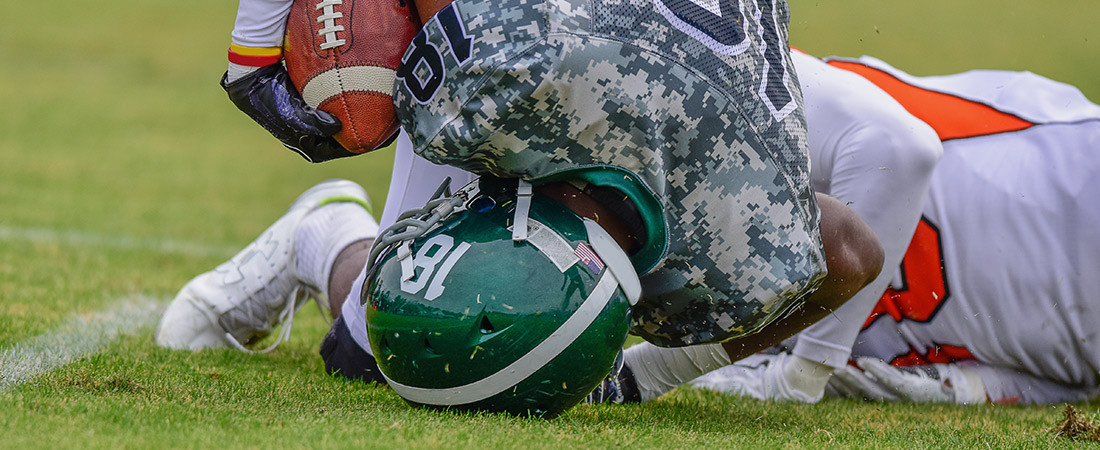Keeping Opioids on the Sidelines

Prescription opioids include medications such as Vicodin, OxyContin, oxycodone, Percocet, fentanyl, Opana, and codeine. The following precautions are recommended:
- If prescribed opioids for pain reduction, athletes should take the minimal amount for the shortest period needed for effective relief.
- Parents should supervise the athlete when he or she is taking the medication. Allowing the athlete to self-administer is not recommended.
- Prescription medication should be secured in a locked cabinet and should be disposed of as soon as the athlete has recovered.
Get more information about preventing prescription opioid misuse among student athletes on the MassTAPP website.
When surgery is required after an injury, opioid-based pain medications may be part of the recovery regimen for teenage athletes. But in a time when the United States is experiencing growing rates of opioid abuse, it is essential to work with teens and their families to make sure that the use of these painkillers does not lead to long-term misuse and addiction.
In 2015, there were 1,379 confirmed opioid-related deaths in Massachusetts alone. EDC’s Lauren Gilman is working with the Massachusetts Bureau of Substance Abuse Services to educate coaches and parents about the role of painkillers in a comprehensive return-to-play program. Her goal? Give parents and coaches the tools and knowledge to get young athletes back on the field—safely.
“Conversations about how to stop this opioid crisis often focus on people who are overdosing,” says Gilman, director of the Massachusetts Technical Assistance Partnership for Prevention (MassTAPP). “We need to make sure that fewer people ever get on that path to addiction in the first place.”
Q: How big is the problem of opioid misuse by teen athletes?
 Gilman: We don’t have a clear-cut answer to this question. Recent research indicates that teen athletes may actually have lower rates of opioid misuse than non-athletes. But we also know that heroin abuse often begins with the misuse of prescription opioids, and that many teen athletes have access to opioid-based painkillers to help them recover from injuries. There is also plenty of anecdotal evidence—in the form of stories from parents and coaches—to suggest we should take the link between prescription opioids and opioid misuse very seriously.
Gilman: We don’t have a clear-cut answer to this question. Recent research indicates that teen athletes may actually have lower rates of opioid misuse than non-athletes. But we also know that heroin abuse often begins with the misuse of prescription opioids, and that many teen athletes have access to opioid-based painkillers to help them recover from injuries. There is also plenty of anecdotal evidence—in the form of stories from parents and coaches—to suggest we should take the link between prescription opioids and opioid misuse very seriously.
Q: What should parents, teachers, and coaches know about opioid misuse among teen athletes?
Gilman: It is important that athletes fully recover before returning to play. Sometimes teenagers push themselves to get back on the field before they are physically ready, relying on medication to mask the pain. Coaches and parents sometimes apply this pressure, too. Not only does a premature return put them at greater risk for addiction, but it also may lead to longer-term injuries, keeping them on the sidelines for extended periods of time. So we want parents to know what opioid pain medications are and how to use them safely. We also want parents, coaches, and athletic staff to know how to support the recovery of injured athletes.
Q: What are some steps that parents, teachers, and coaches can take to prevent opioid misuse?
Gilman: The most important thing teen athletes can do is to prevent injury in the first place. Proper conditioning, stretching, nutrition—these are all essential. When injuries do happen, non-opioid pain relievers, such as naproxen and ibuprofen, should be the first resort.
Should opioid-based painkillers be necessary, then parents should advocate for the minimal amount needed. Parents should also monitor the storage of these medications and then dispose of them afterward.
Q: What are communities already doing to address opioid misuse among teens?
Gilman: There are a handful of communities in Massachusetts that are leading the way on this effort. In Fall River, the health department has been doing presentations about prescription drug misuse with groups of parents, especially parents of athletes. Medford is doing something similar. And in Northampton, schools now have a return-to-play protocol, which helps coaches, parents, and athletes get on the same page about when it is acceptable to come back from an injury. We think these are all good efforts and ones that can help create safer outcomes for teenagers.